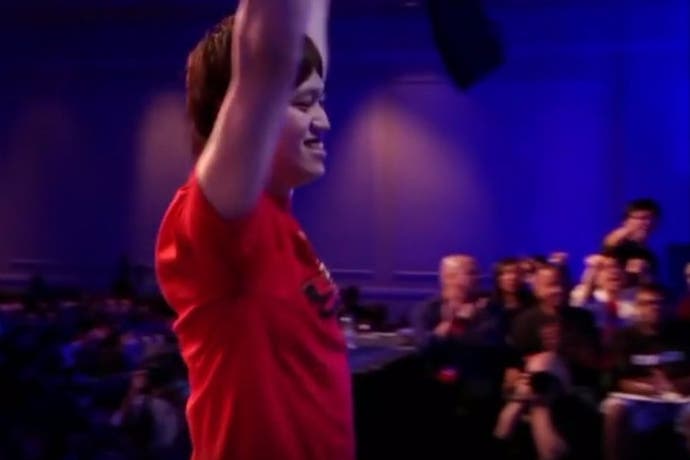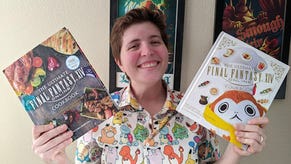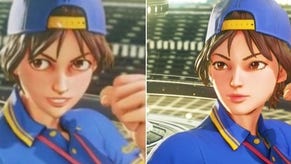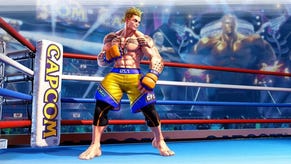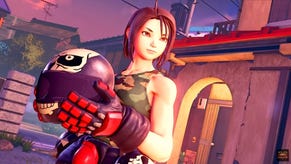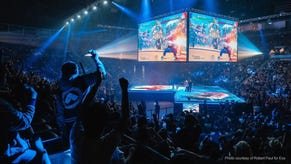Meet the tester who changed Street Fighter
How Ryuichi Shigeno came to be Street Fighter 5's battle director.
Ryuichi 'Woshige' Shigeno had been waiting for more than a decade to fight Ken-ichi 'Ogawazato' Ogawa on a tournament stage when he heard that he'd drawn, as he puts it today, the "match of his dreams." When he was 13-years-old, Shigeno played in his first Japanese national video game competition. Since then, he'd risen to become one of the world's top-ranked players of Guilty Gear, Arc System Works' hyperactive, heavy metal-spruced fighting game series. This was to be, nevertheless, a challenging match-up. Ogawa, a part-time chef from Tokyo, is the world number one. As each player sat down to fight for a spot in the finals at EVO 2015, the largest fighting game tournament in the world, held that year at a Paris-themed hotel, complete with miniature Eiffel Tower, in glittering Las Vegas, more than a hundred thousand people logged on to watch the fight.
Shigeno was born and raised in Kobe, a city slung deep and low on Japan's coastal underbelly. He started playing fighting games when he was ten, after his parents let him play on an arcade machine in the corner of a video rental shop, while they browsed the shelves looking for a film to take home that day. The allure of public performance proved irresistible. "I would practise at home on consoles to get better, then show off the results of my efforts at the arcade," Shigeno says. "It's been 15 years since I started playing so I don't know exactly how much time I've spent playing fighting games, but certainly more than 3,000 hours." Despite his experience, in Las Vegas that day, Shigeno was anxious. "Thinking about how many people are watching still makes me very nervous," he says.
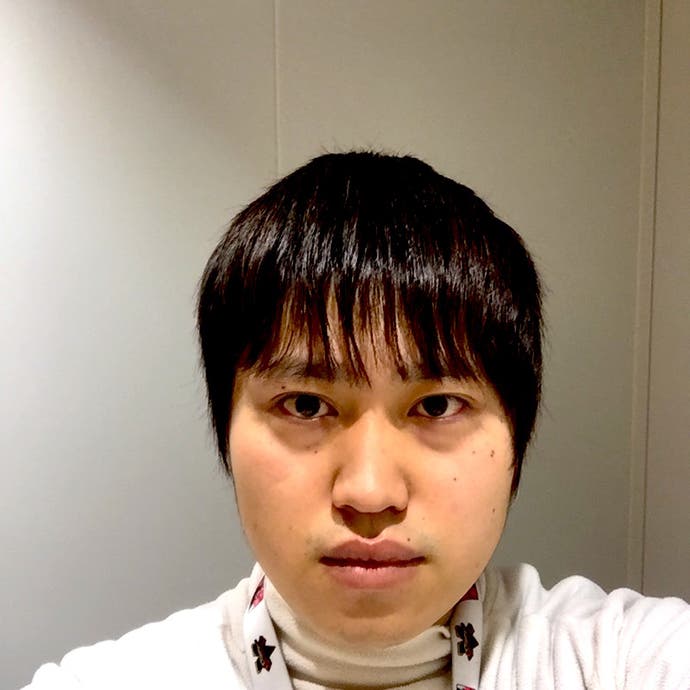
In his early days of competition, Shigeno would prepare for major games like this by studying videos of his opponent's previous matches, searching for pattern and weakness that he might exploit. "I hate it when I can't put that to good use on the day or when my attempts to read the other person backfire," he says. "It creates a bad atmosphere for me. So these days I don't do much preparation before fights." Instead, Shigeno now tries to make both the crowd and the stakes disappear from his mind. "It helps move me into a mental state where I won't fall apart if I make a mistake," he says.
That day in Las Vegas, the technique worked. Shigeno, playing as Millia Rage, a waif-like girl who uses her tendrilous blonde hair as a whip, lost the first round but fought back to take the second with relative ease. "Genius," cried one of EVO's excitable announcers. It was a premature verdict. Shigeno,stood to his feet and slammed his controller onto the seat of his chair. As he raised both of his hands above his fluffy fringe, he turned to face the crowd, shaking his fists exuberantly, forgetting, through some crinkle in his consciousness, that he still had to play the deciding round.
Still seated, the bespectacled Ogawa tugged on his nose. "Oh my God," screamed the commentator. "Woshige thinks it's over?" By the time Shigeno realised his mistake, and had retaken his seat, Ogawa had almost finished assaulting his opponent's defenceless avatar. Seconds later it was over: a perfect win for the Tokyoite. "Not like this," screamed the commentator. "Why? Why?!" Shigeno plunged his head into in hands. The following day ESPN broadcast the footage on its Sports Center programme. "Premature celebrations aren't your fault, but they are your problem," said one of the presenters, with some philosophical gravitas. The clip was shared far and wide, "I still remember how I felt after the match," Shigeno recalls, mournfully. "I knew I'd messed up in a major way. All I could do was laugh."
While the majority of the crowd's attention focused on Shigeno's blunder (it was the most notorious incident of last year's EVO tournament, an event defined by annual competitive upsets), some noticed something else was curious about the scene. The logo on the front of Shigeno's red t-shirt was for Street Fighter 5. In tournaments, Shigeno exclusively played Guilty Gear. Why was he wearing the shirt for a rival game? Not just any shirt, either. This was a T-shirt worn exclusively by members of Street Fighter's development team.
"It was the first time I'd publicised my work at Capcom," says Shigeno, from Capcom's main office in Osaka. "But I actually joined the company in 2007." Indeed, the 25-year-old has been a tester on the majority of Capcom's recent fighting games - Tatsunoko vs. Capcom, Marvel vs. Capcom 3, Street Fighter x Tekken, and early iterations of Street Fighter 4 - searching for bugs in the code. A tester's hours are long and the work monotonously hard, but Shigeno had proved himself a diligent and useful asset. He was moved from bug-testing to work on Ultra Street Fighter 4's content analysis team, where he had to check the balancing of characters, ensuring that there were no moves that could be exploited by a skilled player to upset the game's fine-balance.
Development of Street Fighter 5 was well underway when Shigeno was called into a superior's office and given an extraordinary offer. Capcom, he was told, had taken notice of Shigeno's talent, not only at playing fighting games, but also at improving them. Would he consider, they asked, taking on the role of Battle Director on the company's flagship video game. "I felt honoured and grateful, of course," he says. "But, since that day, also constant pressure. My job is to improve Street Fighter's gameplay. Can you imagine? That is an enormous responsibility."
It's a responsibility from which Shigeno has not shied. Street Fighter 5 is much more than an updated iteration of the earlier game. "We stripped the game back to its fundamentals," he says. "At every stage we wanted to accentuate the individuality of Street Fighter's characters." In this way, the pensive power of Ryu was hardened while, for example, exuberant Ken has become yet more explosive and temperamental. "In the past Ryu and Ken have tended to play similarly since they share so many moves," he says. "We wanted to make it so that, while they still have a similar move-set, they remain completely distinct. Then, for less impactful or appealing characters, we gave them new ways to be played. It's important to let players feel that every character has certain advantages over others. I always remember that as I tune them."
The stakes of this kind of work are tremendously high especially as, during the development process, the series' top competitors showed off early versions of Street Fighter 5 at major tournament events via exhibition matches. Any imbalances in the system would be exposed in a public forum. In 2014, at the Taipei Game Show, Daigo Umehara, Street Fighter's most famous Japanese player, faced up against Gamerbee for one such match. During the second round, Gamerbee triggered Chun-Li's V-trigger mode and, in this state, was able to send a flurry of Kikoken fireballs at Daigo's Ryu. "He was able to completely obliterate Daigo using the technique," Shigeno says. The trick was highly criticised by Street Fighter's ever-watchful community of players. "It's an example of the kind of thing we had to balance as we went through each character and gradually changed the battle system."
While grinning Yohshinori Ono has been known as the face of Street Fighter, ever since he persuaded his employer to resurrect the series in 2008, the game's producer is only an amateurish player. As such, Ono needs the support of expert players like Shigeno, along with the crack team at Dimps, the little known Osaka-based studio run by Takashi Nishiyama, the ex-Capcom employee who originated Street Fighter in the late 1980s, to ensure the game is well-balanced for experts. "Our team is small but elite," says Shigeno. "I don't know if you could call everyone a 'pro'-level player but they all have confidence in their skills. When we play amongst the team we try to play as every character on the roster in order to get a feel for their strengths and weaknesses. I don't always win. I have winning and losing streaks."

While Street Fighter 5 is unmistakably a Street Fighter game, some have perceived Shigeno's love of Capcom's rival Arc System Works' games in its finer details. Street Fighter 5's crush counters are analogous to BlazBlue's Fatal Counters, for example. The character-specific V-Skills and V-Triggers are similar to Guilty Gear's Drives and Overdrives. But more than tailoring the minutiae of these systems to his own tastes, Shigeno's ambition has been to remove Street Fighter's redundancies. "I want to make every move meaningful, he says, "and strive to not include any pointless ones." When designing these interactions, Shigeno always has an eye on how, like musical notes, players might string them together into melodic combos. "I consider what would be a satisfying move to be able to chain into a combo," he explains. "Then I create the basic version of the combo, then fine-tune it from there. It's about providing a toolset of basic combo parts that players can assemble as they see fit according to the situation."
Now that the game has been out for a few weeks Shigeno has been able to watch how players use each character in the wild. "There are some fights I've seen that have totally blown away my expectations for how to use a character," he says. "But at the same time, I've seen characters being used in ways that make me think people just haven't experimented enough yet. Like I say, we've worked to make sure we didn't put in ineffective moves. But that doesn't mean all the effective ways to use each move are immediately obvious."
The process of building a competitive fighting game doesn't stop at the game's launch. Crafting a game that remains competitive, even as its pool of players begin to master characters and systems, is long and arduous work, even before one considers the potential unbalancing effects of adding new characters. "I honestly don't think you can ever say it's time to stop balancing," says Shigeno. "But the reality of game development is that you have a certain amount of time to tune the battle system. One of my jobs as Battle Director is to ensure the best job possible is done within that time. But, you know, the more we play the game the more we discover; the work of balancing is never truly finished."
While, by his mid-twenties, Shigeno has arguably reached the pinnacle of fighting game development, he intends to carry on this work for the foreseeable future. "When I took part in EVO for the first time last year it really made me feel how fighting games allow people to communicate without words," he says. "It's like a common language. I want to see Street Fighter 5 reach as many players as possible and let them communicate with others around the world like I experienced. Working on this has changed me. I've grown so much as a person."
Shigeno's parents, meanwhile, are delighted that their son has found a job that he loves. "They're happy for me," Shigeno says. "But they're still making fun of me for that match..."
